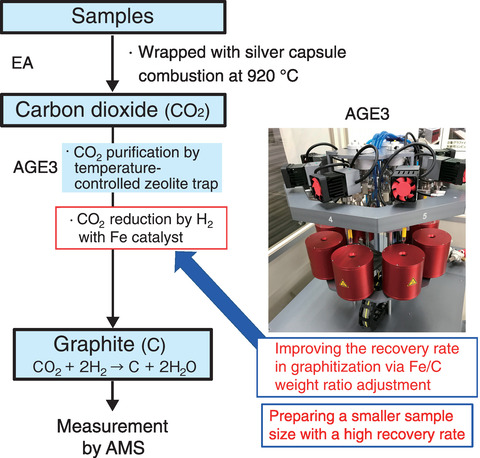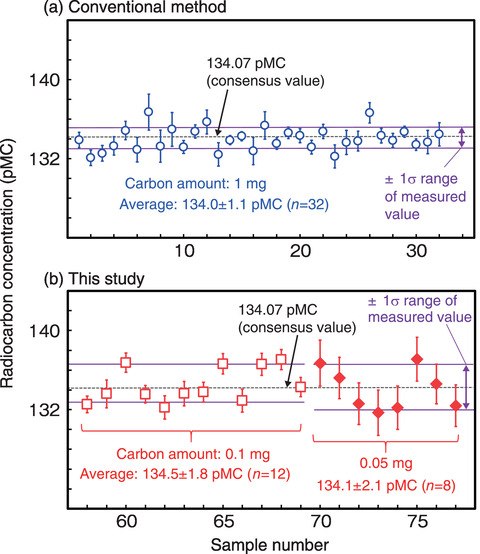
Fig.8-24 Process for graphitization of a small sample

Fig.8-25 14C measurements of standard materials using small samples
Accelerator mass spectrometry (AMS) is a technique widely used for measuring the radiocarbon (14C) concentration in geochronological studies focused on the last 50000 years. AMS-14C measurements of organic materials and carbonate minerals in natural samples have been applied to geological studies, such as the estimation of paleoenvironmental changes. However, suitable geological samples for 14C dating, such as plant residues, are often limited in volume. Therefore, 14C measurements using less than 0.1 mg of carbon are required to date geological samples.
Sample preparation procedures have included CO2 gas purification and graphitization from solid samples using third-generation automated graphitization equipment (AGE3, IonPlus AG) combined with an elemental analyzer (EA), as shown in Fig.8-24. The EA-AGE3 can be utilized as an automated sample preparation system for 14C measurements of standard sample volume (approximately 1 mg of carbon).
Here, we developed preparation procedures using the EA-AGE3 system for AMS-14C measurements using a smaller amount of carbon (0.1 and 0.05 mg). Notably, the recovery rates during graphitization were improved by adjusting the ratio of iron catalyst to carbon sample size in the EA-AGE3 system. The resulting average 14C concentrations (percent modern carbon: pMC) in the standard reference materials prepared by the EA-AGE3 system were close to their consensus values, as shown in Fig.8-25, thereby implying that the proposed preparation technique using only one-twentieth of the carbon sample of the conventional method can be used. Furthermore, the carbon background values were nearly cut in half after the capsules had undergone pre-baking at 500 ℃ for 5 h. We expect that the recovery rate and mass-dependent background corrections of the EA-AGE3 system can be further refined to graphitize small samples as more data are accumulated.
This study was conducted as a part of the public offered project, a commission investigation of geological disposal technology “Development of enhancing the disposal system in the coastal region” under the contract with the Agency for Natural Resources and Energy (ANRE), Ministry of Economy, Trade and Industry, Japan (JFY2016-2018).
(Takahiro Watanabe)